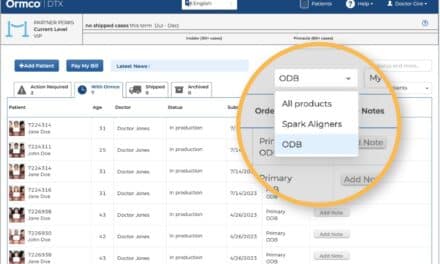by Charles S. Greene, DDS
 |
OP: Why do you think orthodontists shy away from treating TMD?
Greene: Orthodontists should avoid treating TMDs, if that expression means treating them orthodontically. Those of us in the orofacial pain field who have been trying to educate and involve orthodontists in the care of TMD patients have a simple message: When you meet a TMD patient, take off your orthodontist hat and put on your stomatologist hat instead. Provide them with an accurate diagnosis and with basic conservative care, and be sure to clarify the point that their malocclusion is not the basis for their TMD symptoms. I will expand on these statements below.
OP: What’s the best thing an orthodontist can do for a patient who presents with TMD symptoms at the outset of treatment?
 |
Greene: The orthodontist must determine if any TMD symptoms are present as part of the overall screening process. However, many so-called symptoms are either insignificant (such as painless clicking) or just normal variations (such as a crooked opening pattern) or situational (the jaw hurts after chewing gum or sitting in a dental chair for a long time).
Significant jaw pain and dysfunction does require treatment before orthodontic therapy is initiated, and hopefully an enlightened orthodontist can provide that basic TMD treatment. If not, he or she has to find somebody else who will, and this requires careful selection because of the many pseudo-experts who claim to provide appropriate TMD treatments.
OP: What about patients who develop symptoms during treatment?
Greene: The first rule in such cases is to stop active orthodontic mechanics immediately; this is both a medic-legal and a practical matter at that point. The question to be resolved is: Did the patient develop TMD symptoms because of the orthodontic treatment, or merely during that treatment period? Once again, basic pain management and support should be provided to reduce the symptoms, and then the orthodontic treatment process can be resumed. If the symptoms keep recurring as treatment resumes, the orthodontist may be dealing with a person who cannot accommodate to the forces and mechanics of conventional orthodontic therapy, and it is time to consider a compromise treatment plan.
OP: What is the worst thing that an orthodontist can do for a TMD patient?
Greene: I will assume that this question refers to patients who are referred to the orthodontist primarily for management of a TMD problem. The worst thing is to tell that patient that existing features of occlusion are responsible for the TMD, and correction of them will not only get rid of symptoms, but will also help to prevent future symptoms. Unfortunately, some orthodontists still deal with TMD patients in this manner, despite mountains of evidence showing it is essentially unscientific. While I am aware that controversies about this matter persist in your world (as they do also in my world of general dentistry), your own literature is quite clear on the fundamental questions:
- Does orthodontic treatment generally cause or predispose patients to developing TMD problems?
- Is orthodontic correction of occlusal disharmonies and malocclusions required to treat TMD patients successfully, either short-term or long-term?
The answer to both questions is basically no, so you should feel good about your lack of guilt in the first instance, but you also must accept your limited role in contemporary TMD management.
| To read more on the topic of TMD, search our . |
OP: What else should orthodontists know about TMD patients?
Greene: My hope is that more and more orthodontists will come to understand how TMDs have become a separate field of research as well as clinical practice. This field is no longer linked to conventional dentistry via occlusion and jaw-alignment theories, but it is still strongly linked to every dentist’s responsibility for treating patients appropriately. Therefore, the orthodontist has the same obligation as every other dentist: to learn how to diagnose orofacial pain patients properly (thereby avoiding mislabeling other conditions as TMDs), and then to provide conservative basic management for their pain and dysfunction.
Charles S. Greene, DDS, joined the faculty of UIC College of Dentistry in 1965. He has served as Director of Orofacial Pain Studies. He currently is a clinical professor in the Department of Oral Medicine and Diagnostic Sciences. He has published about 100 articles, book chapters, and abstracts; and he recently was coeditor of a multiauthor book about temporomandibular disorders. He can be reached at










